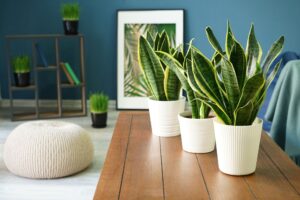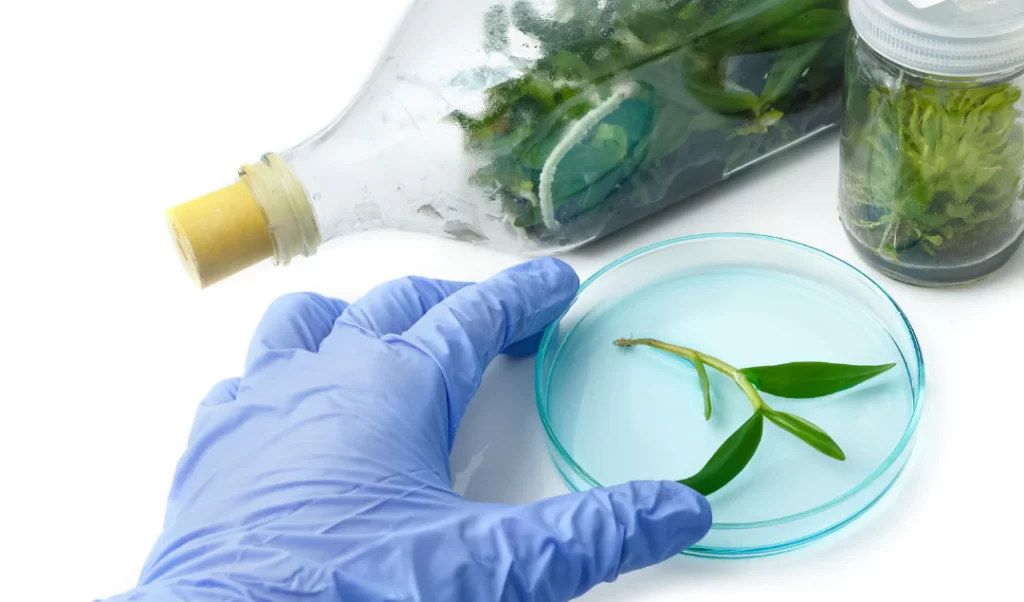
In an age where indoor air quality is becoming increasingly important, air-purifying houseplants offer a natural solution to improving the air we breathe at home. These plants not only add beauty to your living spaces but also help to remove toxins and increase oxygen levels. In this article, we’ll explore the benefits of air-purifying houseplants and highlight some of the best varieties to consider, along with their care needs.
Why Air-Purifying Houseplants Matter
Indoor air pollution is a significant concern, with sources ranging from household cleaning products and building materials to outdoor pollutants that seep inside. Common indoor air pollutants include volatile organic compounds (VOCs) like formaldehyde, benzene, and trichloroethylene, as well as mold spores and dust particles. Prolonged exposure to these pollutants can lead to health issues such as headaches, respiratory problems, and allergies.
Air-purifying houseplants can help mitigate these issues by absorbing pollutants through their leaves and roots and releasing clean oxygen back into the air. Studies by NASA and other organizations have shown that certain houseplants are particularly effective at filtering out harmful substances and improving indoor air quality.
Top Air-Purifying Houseplants
Snake Plant (Sansevieria trifasciata)
The snake plant, also known as mother-in-law’s tongue, is one of the most popular air-purifying houseplants. It is highly effective at removing formaldehyde, benzene, xylene, and toluene from the air. Snake plants are incredibly resilient and can thrive in low light and with minimal watering, making them perfect for beginners.
- Care Needs: Place in indirect light, water sparingly, and ensure well-draining soil.
Spider Plant (Chlorophytum comosum)
Spider plants are excellent for removing formaldehyde and xylene from indoor air. They are easy to care for and produce offshoots that can be propagated into new plants. Spider plants are also pet-friendly, making them a safe choice for households with animals.
- Care Needs: Place in bright, indirect light, water moderately, and keep soil moist but not soggy.
Peace Lily (Spathiphyllum)
Peace lilies are known for their beautiful white blooms and their ability to remove pollutants like formaldehyde, benzene, and trichloroethylene. They also help to increase humidity, which can be beneficial in dry indoor environments. Peace lilies are relatively low-maintenance and thrive in low to medium light conditions.
- Care Needs: Place in low to medium light, water when the top inch of soil is dry, and keep in well-draining soil.
Aloe Vera (Aloe barbadensis miller)
Aloe vera is not only known for its healing properties but also for its air-purifying capabilities. It is particularly good at removing formaldehyde and benzene. Aloe vera is a succulent, so it requires very little water and thrives in sunny spots.
- Care Needs: Place in bright, indirect or direct sunlight, water sparingly, and use a cactus or succulent potting mix.
Boston Fern (Nephrolepis exaltata)
Boston ferns are excellent for removing formaldehyde and xylene from the air. They also add a lush, green touch to any room. These ferns prefer humid environments, making them ideal for bathrooms or kitchens.
- Care Needs: Place in indirect light, keep soil consistently moist, and maintain high humidity.
Areca Palm (Dypsis lutescens)
The areca palm is a beautiful, feathery plant that is effective at removing toluene and xylene. It also releases large amounts of moisture into the air, making it a natural humidifier. Areca palms can grow quite large, so they are best suited for spacious areas.
- Care Needs: Place in bright, indirect light, water regularly, and ensure well-draining soil.
Rubber Plant (Ficus elastica)
Rubber plants are known for their large, glossy leaves and their ability to remove formaldehyde from the air. They are relatively easy to care for and can grow into impressive indoor trees with the right conditions.
- Care Needs: Place in bright, indirect light, water when the top inch of soil is dry, and use well-draining soil.
English Ivy (Hedera helix)
English ivy is particularly good at removing mold spores from the air, making it ideal for allergy sufferers. It is also effective at filtering out benzene, formaldehyde, and other pollutants. English ivy can be grown in hanging baskets or as a climber on a trellis.
- Care Needs: Place in bright, indirect light, water regularly to keep soil moist, and trim as needed to control growth.
Care Tips for Air-Purifying Houseplants
- Light: Most air-purifying plants thrive in bright, indirect light. However, some, like the peace lily and snake plant, can tolerate lower light conditions.
- Watering: Overwatering is a common issue with houseplants. Ensure that the soil is well-draining and only water when the top inch of soil feels dry. Adjust watering frequency based on the plant’s needs and the season.
- Humidity: Many air-purifying plants, especially tropical varieties, prefer higher humidity levels. You can increase humidity by misting the plants, using a humidifier, or placing a tray of water near the plants.
- Soil: Use the appropriate soil mix for each plant. Succulents like aloe vera need a cactus mix, while ferns and other moisture-loving plants prefer a peat-based mix.
- Cleaning: Dust can accumulate on the leaves of houseplants, reducing their ability to purify the air. Wipe the leaves regularly with a damp cloth to keep them clean and ensure optimal air purification.
Conclusion
Air-purifying houseplants offer a natural and effective way to improve indoor air quality while adding beauty and tranquility to your home. By choosing the right plants and providing proper care, you can enjoy the benefits of cleaner air and a healthier living environment. Whether you’re a seasoned plant parent or a beginner, incorporating air-purifying houseplants into your indoor garden is a rewarding and beneficial practice.
News Style Grid Post with Image
Display your blog post individually in full grid view on a light background



